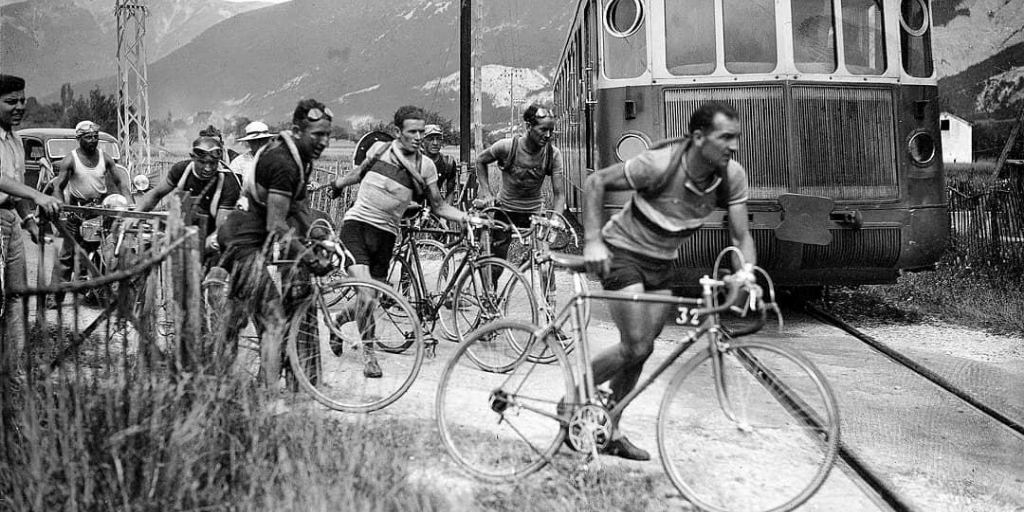The 31st Tour de France was held between 30 June and 25 July in 1937. The route was 4415 km long, divided into 20 stages (many of them had a and b parts).
This was the first time since the creation of the Tour de France, that not Henri Desgrange, the “founding father” was the race director. Jacques Goddet was fully in charge and the first big changes came with him: 1937 was the first time when gear change was allowed. Each team has its own car with extra material to help with mechanical problems. On the other hand, it was the last time riders without a team could attend the race. Tour de France became a bit more professional.
After their absent in 1936 for political reasons, the Italian team was racing at the Tour de France again in 1937. Their team leader was the new shining star, Gino Bartali, who ha already won Giro d’Italia twice (1936 and 1937). The Belgian team came with the defending champion Sylvére Maes. And finally, after two years of absence, Roger Lapebie was invited to the French team again. Also, Julian Berrendero, the best climber of the previous edition was there and Gustaaf Deloor, the winner of the first two Vuelta an Espana (1935 and 1936) attended the race as individual/independent rider.
After winning the 7th stage, Gino Bartali took the yellow jersey, but he could enjoy the leading position too much. On the next day, when his teammate Jules Rossi crashed, he could only avoid hitting the ground with falling into a river. He could finish the stage and keep the jersey, but only for one more day. He abandoned the race on Stage 12.
Since the 9th stage, Sylvére Maes led the general classification ahead of Mario Vicini and Roger Lapebie, who became the clear leader of the French team.
And then came the 15th stage. Before the stage, someone broke off the handlebars or Lapebie’s bike. He could repair it, but it missed a water holder, so he had to start the stage with four big mountains (the classic Peyresourde, Aspin, Tourmalet and Aubisque quartet) without water. He was losing time since the beginning of the stage, but his teammates helped him through the worst phase. On the top of the Tourmalet he was 7 minutes behind Maes. but he rode downhill furiously and decreased the gap to only 3 minutes. Within the last 15 km Lapebie was able to cache his main rival and finished second behind Julain Berrendero. The Frenchman got a 45-sec time bonus but a 90-sec penalty. He was pushed on the ascents by his fans, was holding on to cars uphill and drafting them downhill. The Belgians were quite upset due to the fact, that Lapebie gained much more time by the illegal activities than he lost by the penalty.
Nevertheless, Maes remained in yellow, but he had a bad day on the next stage. He had a puncture and was helped by Gustaaf Deloor and Adolf Braekeveldt. two individuals, which basically wasn’t allowed, so Maes got a 15-sec (or 25-sec according to other sources) penalty. This was the stage when Lapebie was allowed to cross the railway before the bars were lowered, but Maes wasn’t. This was too much for the Belgians, they left the race before the 17th stage.
At the end, Roger Lapebie won the race wich considered to be one of the most scandalous editions in the history of Tour de France.
Top 10 of the race:
Roger Lapébie 138hr 58min 31sec
Mario Vicini 7min 17sec
Léo Amberg 26min 13sec
Francesco Camusso 26min 53sec
Sylvain Marcaillou (35min 36sec
Edward Vissers 38min 17sec
Paul Chocque 1hr 5min 19sec
Pierre Gallien 1hr 6min 33sec
Erich Bautz 1hr 6min 41sec
Jean Fréchaut 1hr 24min 34sec
